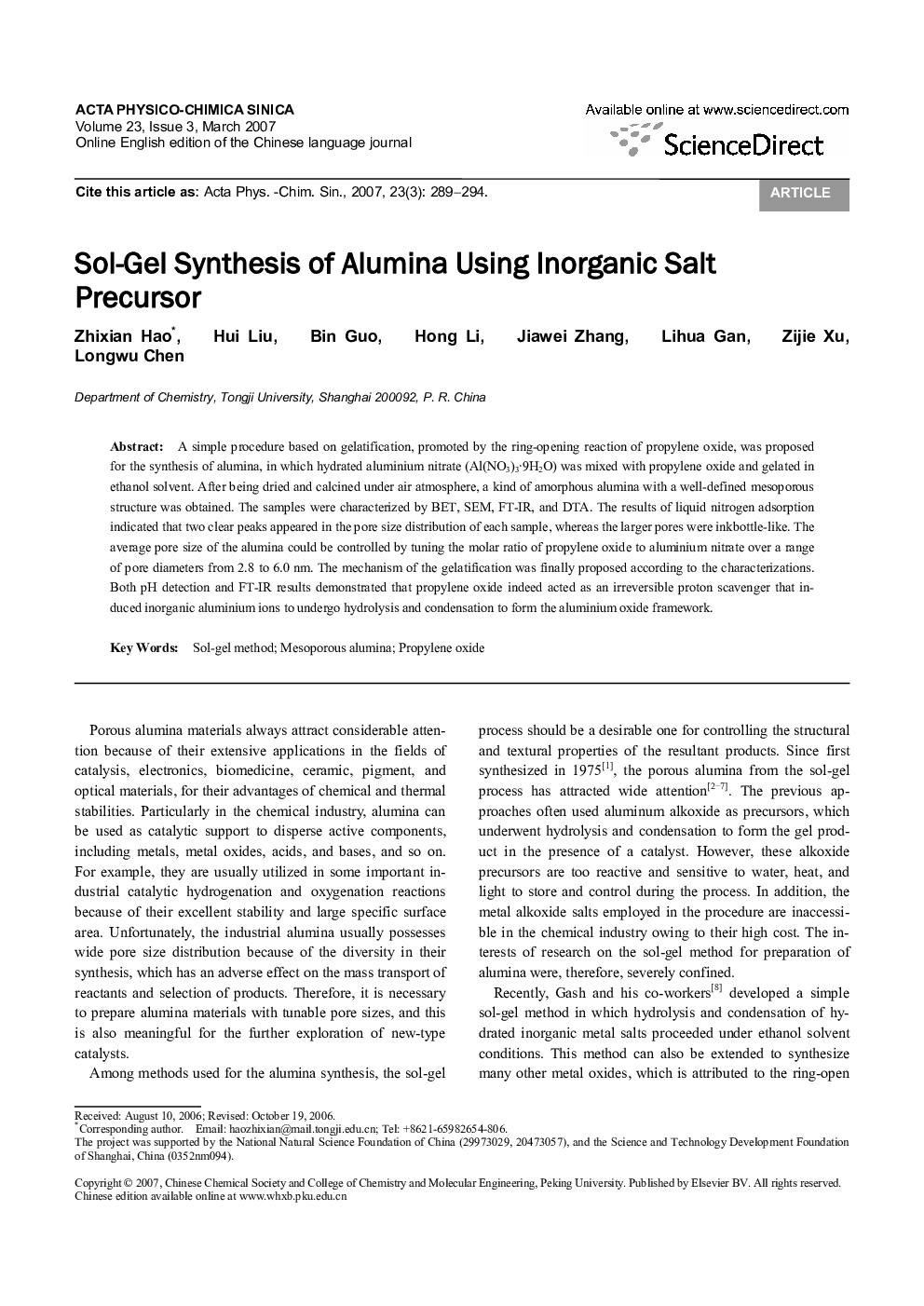| Article ID | Journal | Published Year | Pages | File Type |
|---|---|---|---|---|
| 7832182 | Acta Physico-Chimica Sinica | 2007 | 6 Pages |
Abstract
A simple procedure based on gelatification, promoted by the ring-opening reaction of propylene oxide, was proposed for the synthesis of alumina, in which hydrated aluminium nitrate (Al(NO3)3·9H2O) was mixed with propylene oxide and gelated in ethanol solvent. After being dried and calcined under air atmosphere, a kind of amorphous alumina with a well-defined mesoporous structure was obtained. The samples were characterized by BET, SEM, FT-IR, and DTA. The results of liquid nitrogen adsorption indicated that two clear peaks appeared in the pore size distribution of each sample, whereas the larger pores were inkbottle-like. The average pore size of the alumina could be controlled by tuning the molar ratio of propylene oxide to aluminium nitrate over a range of pore diameters from 2.8 to 6.0 nm. The mechanism of the gelatification was finally proposed according to the characterizations. Both pH detection and FT-IR results demonstrated that propylene oxide indeed acted as an irreversible proton scavenger that induced inorganic aluminium ions to undergo hydrolysis and condensation to form the aluminium oxide framework.
Related Topics
Physical Sciences and Engineering
Chemistry
Physical and Theoretical Chemistry
Authors
Zhixian Hao, Hui Liu, Bin Guo, Hong Li, Jiawei Zhang, Lihua Gan, Zijie Xu, Longwu Chen,
